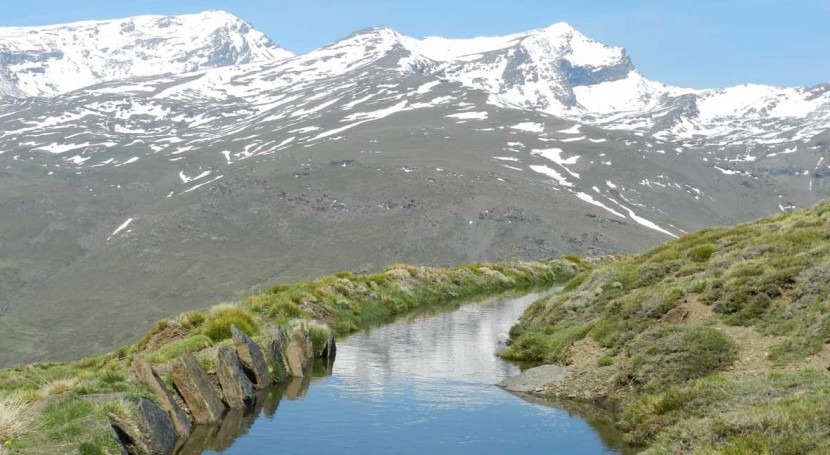A multidisciplinary group of scientists from the Geological and Mining Institute of Spain (IGME) and the Universities of Granada, Cologne, and Lisbon has demonstrated that the traditional careo underground aquifer recharge system used in Sierra Nevada is the oldest in Europe. This finding is the outcome of various research techniques conducted by experts from different fields including archaeology, sedimentology, geophysics, and hydrogeology.
The results of this study have been published in the prestigious Journal of Hydrology, in a paper entitled “The oldest managed aquifer recharge system in Europe: New insights from the Espino recharge channel (Sierra Nevada, Southern Spain)”.
The “sowing and harvesting” of water is the managed process by which human beings intentionally channel water to seep via the subsoil (sowing) so that it can be collected (harvested) at some point in the future. For centuries, this practice of recharging mountain aquifers has been conducted in several regions of our planet, although the most-documented cases are found in the high-Andean regions of Peru and Ecuador.
In Sierra Nevada, water is sown and harvested by means of the so-called acequias (irrigation channels) de careo. These acequias, dug out of the ground, are used by mountain stock farmers and acequieros (the individuals with expert skills in water catchment and allocation) to channel the meltwater so that it seeps down through the high part of the valleys. Once the water has percolated through the subsoil, it trickles down the mountain slopes to, eventually, feed the rivers and springs. This increases their flow during the dry season, when it is most needed.
The archaeological and historical research conducted on this project has shown that there were acequias de careo operating in Sierra Nevada as early as the 11th Century. However, the innovative dating techniques used in the study went a stage further, calculating how long the grains of quartz sediment that were dragged here by the early acequias have remained buried. These calculations show that the practices of sowing and harvesting water on Sierra Nevada date back about 1,300 years. That means this system was first implemented during the transition period between the end of the Visigoth period and the beginning of the period associated with al-Andalus.




